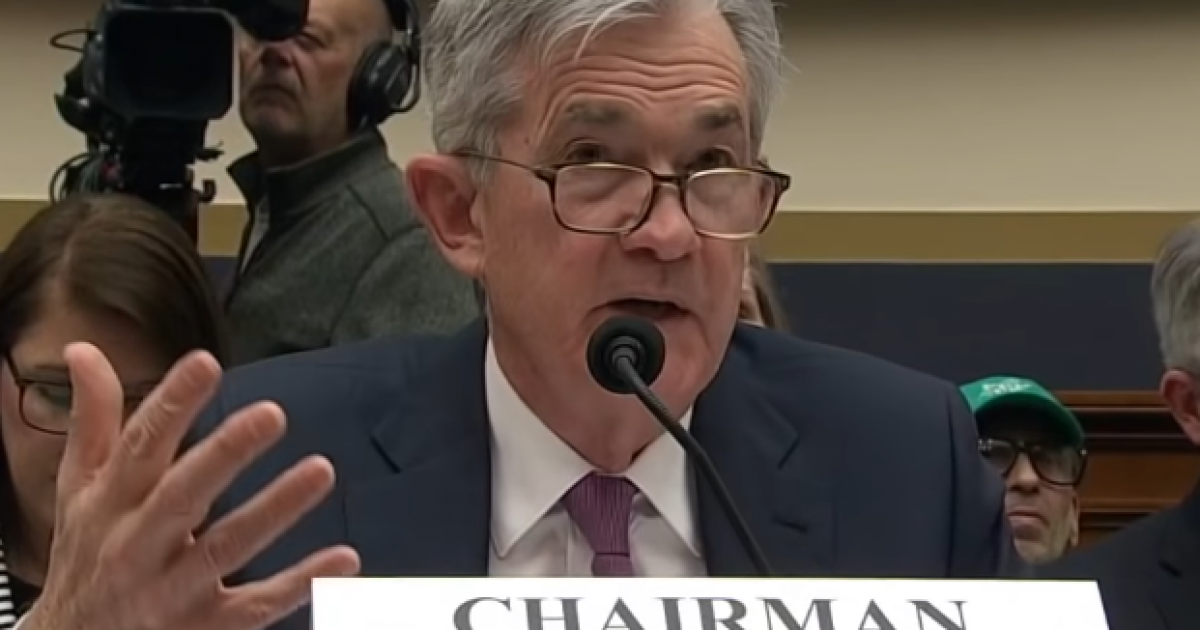
We all know the Federal Reserve’s ostensive role is to “promote” stable prices and full employment. However, history has shown that the Fed has diminished the dollar’s purchasing power, thus destabilizing price levels. Additionally, the Fed generates boom-and-bust cycles that leads to periods of high unemployment.
But it doesn’t stop there.
In a recent article, former Congressman Ron Paul noted that “Federal Reserve Chairman Jerome Powell recently announced a new Fed mandate: to protect the financial system from being destabilized by climate change.”
Like many of his technocratic colleagues, Powell has bought into the global warming hysteria. According to Paul, Powell “announced a new Fed mandate: to protect the financial system from being destabilized by climate change.”
Environmental alarmists constantly use the cliché phrase that “the science is settled” when speculating about the causes and effects of climate change. By declaring that the debate is finished, environmentalist fanatics can then proceed to push their government interventions forward.
However, the scientific process is not so simple. In fact, there is often a lot of “unsettled” science as researchers continue to discover new insights. For political busybodies, this process is too cumbersome. They’re constantly looking for quick fixes, so any type of sober analysis that involves extensive research is instantly discarded.
How the Fed will deal with climate change is anyone’s guess, but Paul offers several hypothetical scenarios:
For starters, Powell could signal that the Fed would be willing to increase its purchase of government debt if Congress passes Representative Alexandria Ocasio-Cortez’s Green New Deal. The Fed, since its creation, has been monetizing federal debt, and thus enabling the growth of the welfare-warfare state.
Paul also notes that the Fed could use its patented “quantitative easing” and give it a “green” twist:
The Fed could implement “Green Quantitative Easing” by purchasing bonds of green energy and other companies whose products fit the environmentalist agenda. The Fed could also use its monetary and regulatory authority to “encourage” financial institutions to support “environmentally-friendly” businesses.
However, Paul notes that no matter what the Fed does to allegedly protect the financial system from the bugaboo of climate change, “the result will be further erosion of the dollar’s purchasing power, increased government control over the economy, lower economic growth, increased crony capitalism, and a reduction in liberty and prosperity.”
Paul does call attention to the fact that the Fed’s plan to supposedly tackle climate change will end up hurting the environment in the long-term. Contrary to popular belief, free-market institutions have done a better job in protecting the environment than the state. Paul highlighted this:
History shows that the most effective way to protect the environment is via a system of private property rights and free markets. Private property owners are better stewards of the environment than are government bureaucrats because private property owners have greater incentives to maintain the value of their property. This is why the greatest pollution in history was in the communist countries of the 20th century.
In the end, America needs to return to sound money if it ultimately wants a truly limited government that enables economy prosperity and the development of healthy civic institutions.
It is no coincidence why the biggest expansions of the American government have occurred ever since the Federal Reserve was established in 1913.
This is why the abolition of the Fed must be a key priority for every liberty conservative.



